Those of you who have followed me for a while will know I’ve spent a considerable amount of time exploring the northern region of Italy. My first trip to Italy was in 2014 on a family vacation during my junior year of high school. Two years later, I studied abroad in Italy the summer after my freshman year of college. Our group studied at the Piacenza campus of l’Università Cattolica del Sacro Cuore for six incredible weeks.
Most recently, my husband and I ventured back to Italy for two weeks in August of 2024, where I totally gained a few pounds in pizza, pasta, and overindulging in Italian wine—worth it. I fell even deeper in love with the people, the culture, the language, the art, and, of course, the food.
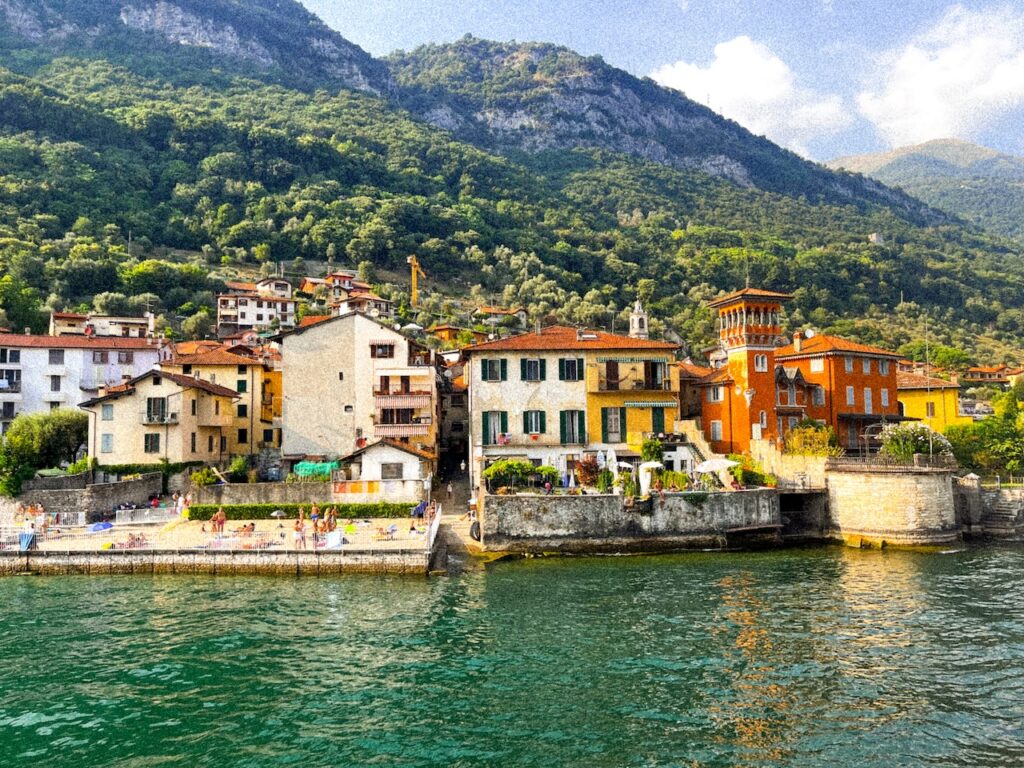
A Foodie’s Guide to Italy
Italian food—real Italian food—has always been one of my favorites. I have to clarify, because Italian food in the states is nothing compared to the dishes you find back in Italy. Italy’s best export is food, and it changes from north to south, town to town, and even household to household. But of course, everyone’s nonna makes the “best.”
Like with accents and dialects, the food changes in every region of Italy, with each location offering a different local specialty. Bologna, for example, is the birthplace of lasagne; Napoli made the first pizza; and the Romans created the heavily triggering “real” carbonara recipe (no cream, y’all!).
Let’s dive into my foodie guide to each region in Italy (many of which I recently sampled!).
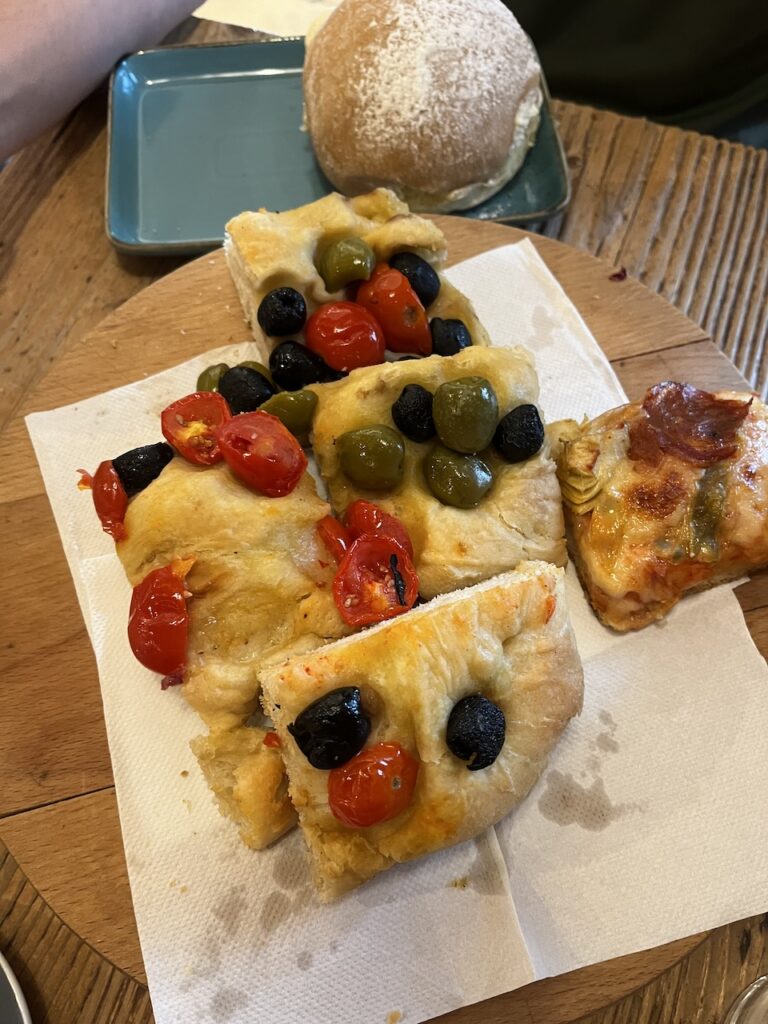
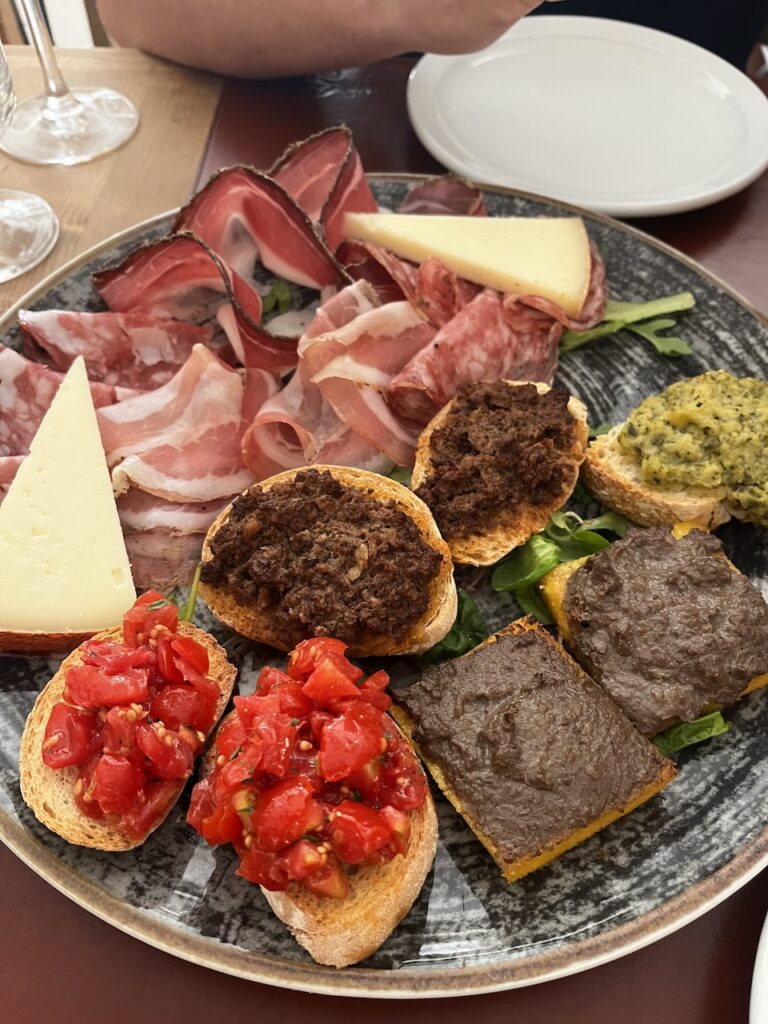
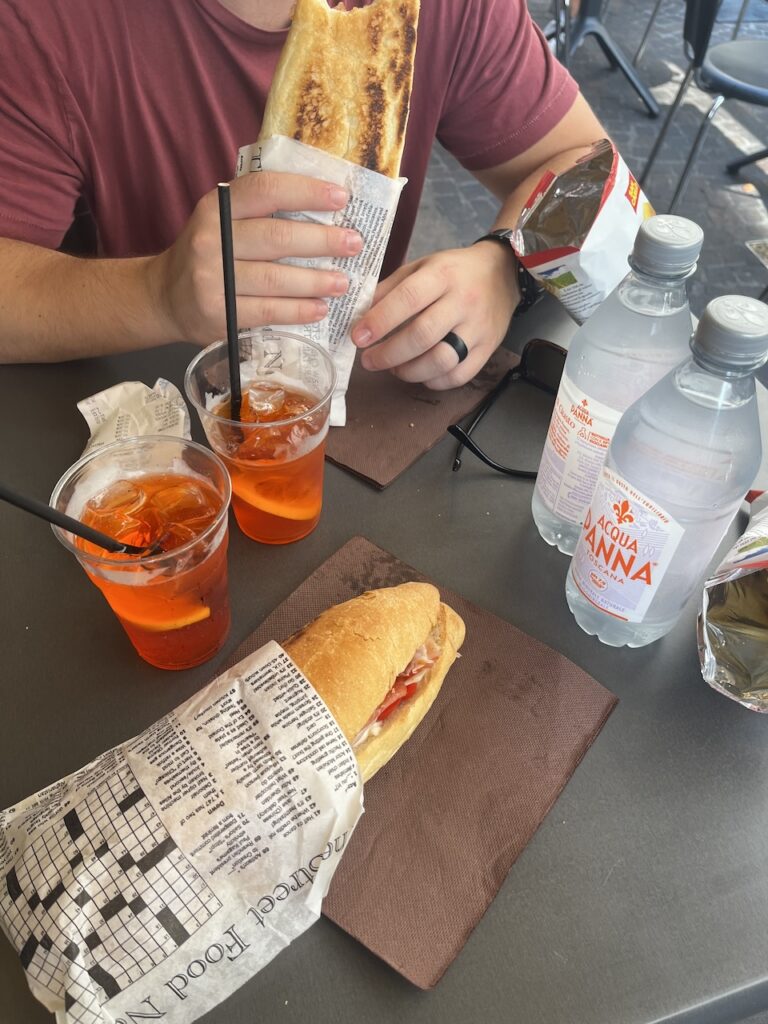
If you want to steal the itinerary from our Italy trip last summer, we visited Milan, Como, Bellagio, the Dolomites, Venice, and Florence. Steal our full 14 day itinerary in northern Italy by train here!
What is The Food Like Across Italy’s Diverse Regions?
The first thing to understand about food in Italy is that the country is separated into regions. Italy is home to 20 administrative regions, each with its own dialect, customs, and famous food.
When I spent a semester in Italy, I spent the majority of my time in the north, visiting the cities of Milan, Venice, Cortona, Florence, Genoa, Turin, Como, Piacenza, Montepulciano, Arezzo, Rome, Parma, Modena, Bologna, Pisa, La Spezia, and Cinque Terre and sampling everything they had to offer.
Choosing your favorite Italian dish is an impossible feat; however, I did have a bowl of squid ink pasta in Cinque Terre that lives in my mind rent-free. Squid ink pasta is a Sicilian dish but like most regional foods, you can find them all over Italy, with everyone promising theirs is better than their neighbor.
I sampled a similar seafood dish in Venice last summer, this one made with Cuttlefish cooked in its own ink with a side of polenta. Might look…interesting… but it was actually really yummy. Or you can just take my word for it, LOL. Try it for yourself at this fab new family-owned restaurant called Regina Corner.
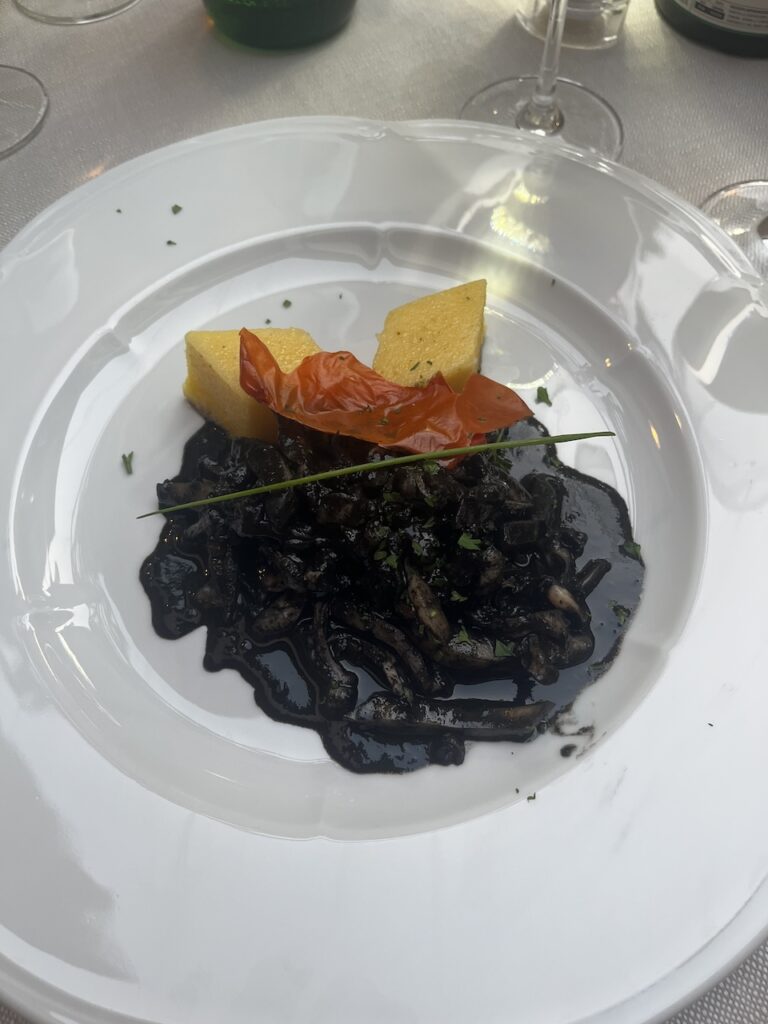
Regions of Italy
Like food, accents, and cultures, every region in Italy is also known for a type of wine that will pair perfectly with the ingredients used in the region. Although it goes without saying, you don’t need a meal to enjoy a glass of red when in Rome.
Starting with…
Abruzzo: Spaghetti alla Chitarra
Abruzzo is located in central Italy, with mountains towards the west and the coast towards the east—it’s considered the “greenest region in Europe.” Thanks to the ample countryside in the region, there are plenty of great, fresh ingredients to choose from. Lamb, truffles, mushrooms, red garlic, and rosemary are all abundant in the area and included in most meals.
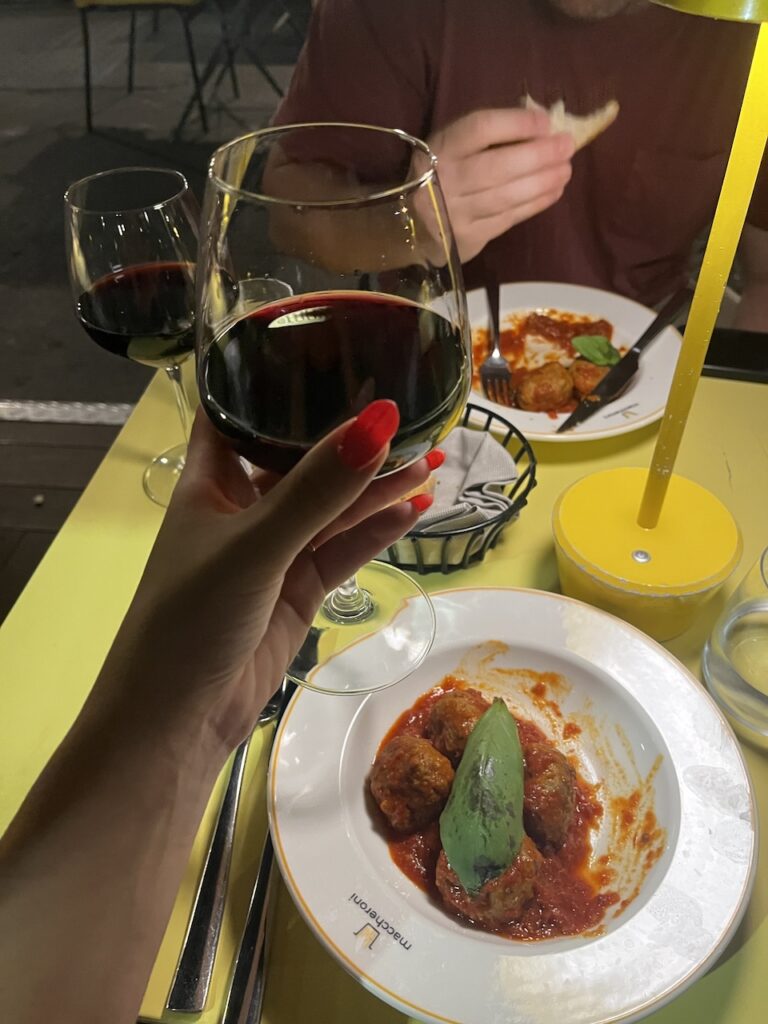
When it comes to dishes, the most famous is Spaghetti alla Chitarra, the local pasta served with a tomato-based sauce. Arrosticini is a lamb skewer that is also popular, especially in the mountains. As a coastal region, Abruzzo is home to plenty of great seafood too, particularly the brodetti, which is a seafood broth with tomatoes, herbs, and peperoncino.
Wine Selection: Don’t miss out on a bottle of the local Montepulciano d’Abruzzo when you’re in the area. This is my husband and I’s all-time favorite red wine!
Basilicata: Lucanica di Picerno
Located in southern Italy, Basilicata is home to two coastlines—one in the Tyrrhenian Sea and the other in the Gulf of Taranto—and is the most mountainous region in Italy. Traditionally, pork, lamb, and mutton have been staples of the local diet for centuries, so it is no surprise that the Lucanica di Picerno (PGI) is the local specialty. The pork sausage has a protected status and has been produced in the area since before the Roman Empire.
Peperoni Crusco (PAT) are dried sweet peppers—often referred to as “the red gold of Basilicata”—that are used in many different local dishes, like pasta con i peperoni cruschi. Basilicata is known for its naturally sparkling mineral water that comes from the streams on Mount Vulture. If you’ve been to Italy, you’ll know how much Italians love their acqua frizzante.
Wine Selection: Aglianico del Vulture is the wine of the region and is considered to be one of the best wines in the whole country.
Calabria: ‘Nduja
Calabria, in southern Italy, is the “toe” of Italy’s boot and is home to three mountain ranges, as well as some of the most beautiful beaches in Europe. This region is known around Italy and the world for its spicy food, particularly ‘Nduja‘, a spicy, spreadable sausage. Another popular specialty is caciocavallo cheese, which has a protected geographical status. It is a typical southern Italian cheese made with cow’s or sheep’s milk.
In the coastal regions, there is plenty of seafood to be found, particularly cured cod, swordfish, and sardines. Calabria preserves a lot of food in olive oil and it’s not uncommon to find preserved vegetables and meats in the local supermarket or offered with an aperitivo in the local bar.
Wine Selection: If you are in Calabria and heading out for an aperitivo, try a glass of Ciro (DOC).
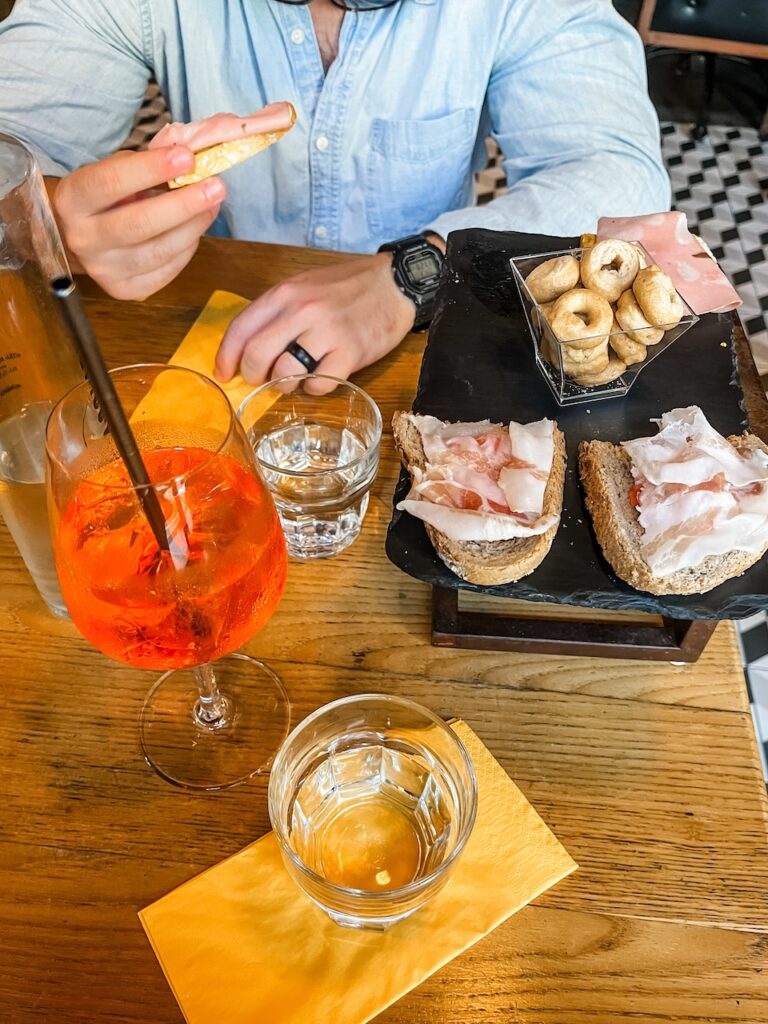
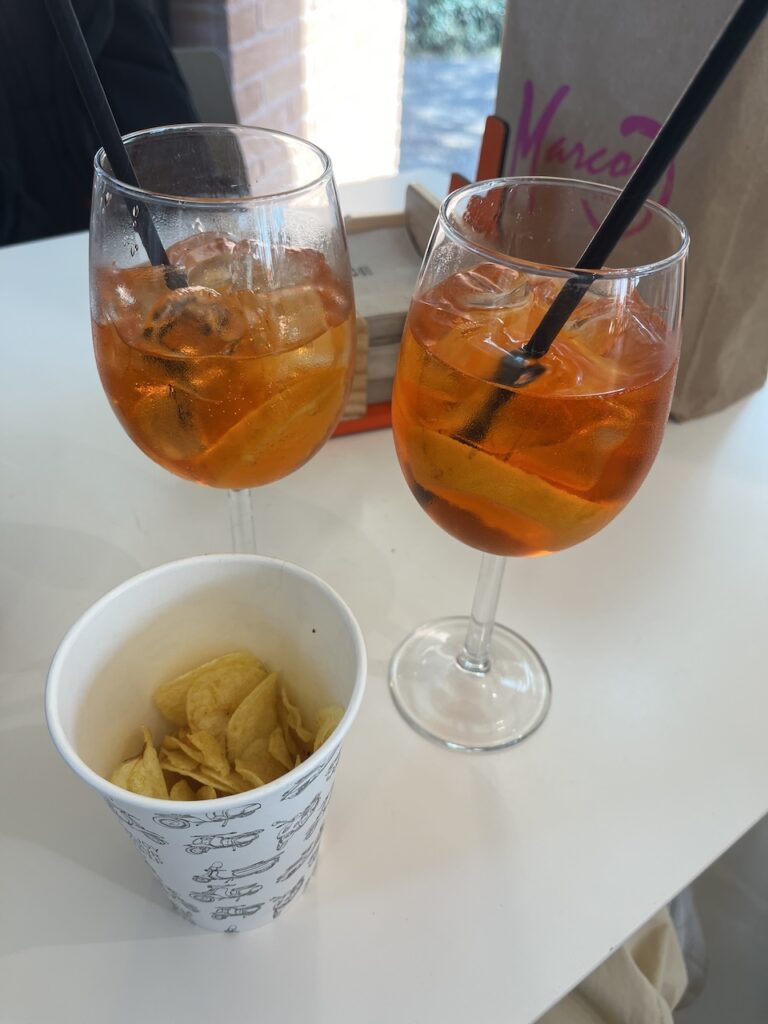
Campania: Pizza
Campania is located in the southwest of Italy and is home to Napoli, Pompeii, the Amalfi Coast, and the Island of Capri, some of Italy’s most famous tourist destinations. The area is extremely rich in history and culture and very passionate about food.
Napoli, the capital of Campania, in particular, is famous all over Italy for its food and is the birthplace of everyone’s favorite snack, pizza. But there is a lot more to the food in Napoli than just pizza; don’t miss crocche, a fried, stuffed potato ball, or sciurilli, fried zucchini flowers.
Along the coast, seafood is extremely popular, especially dishes like spaghetti alle vongole (clams) or fritto misto di mare. Inland, meals are centered around vegetables, beans, and local cheeses, especially mozzarella di Bufala, which comes from the region. I’m practically lactose intolerant but I simply can’t turn down a sandwich with mozzarella di Bufala.
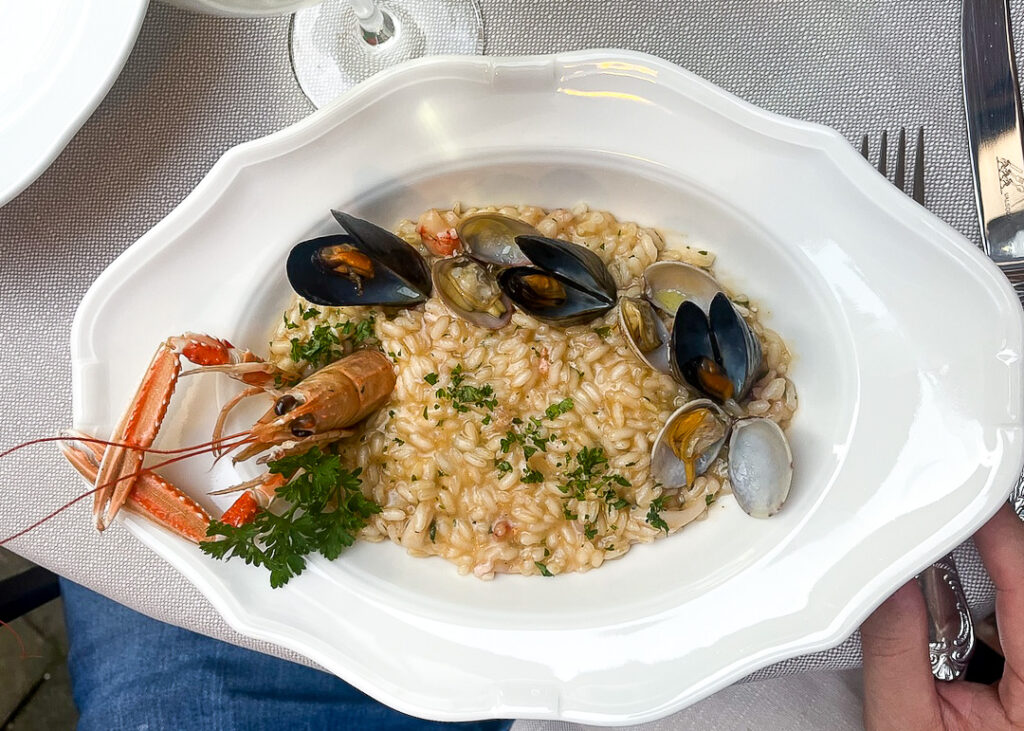
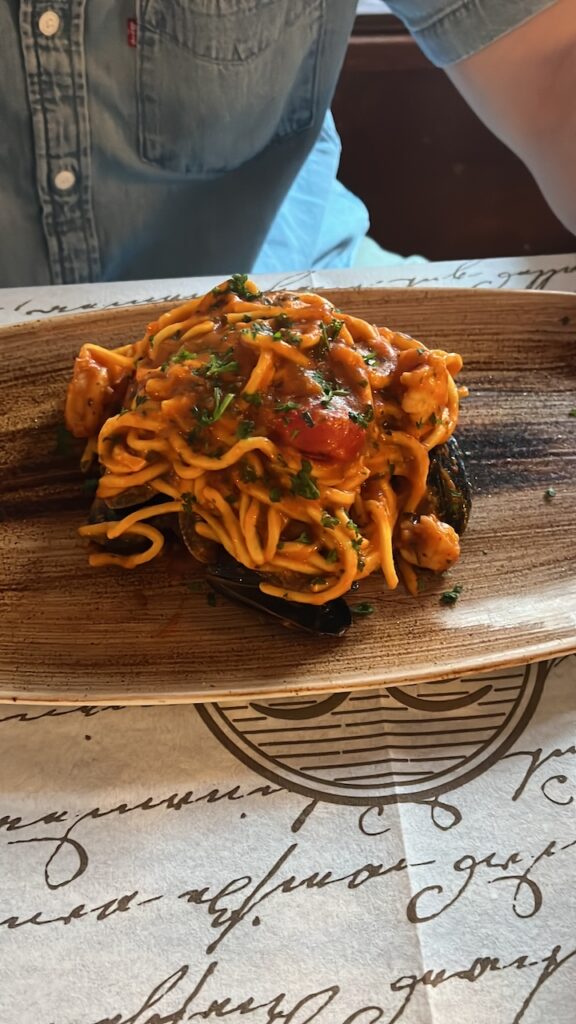
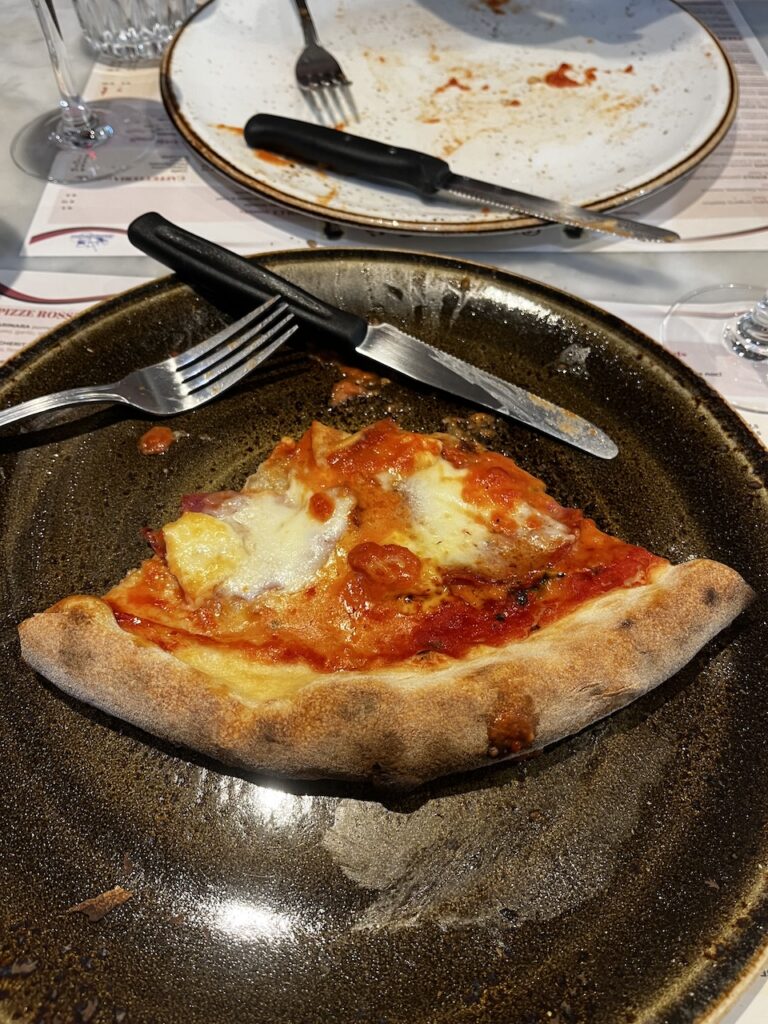
Wine Selection: Try Fiano di Avellino, Greco di Tufo, or Taurasi for a good local wine.
Emilia-Romagna: Parmigiano
Emilia-Romagna is located in the north of Italy and is home to mountain ranges, beautiful beaches, and the oldest university in the world. This region is considered a center for food production and one of the richest areas in terms of food and drink. Piacenza, the town I spent the majority of my time studying, is located at the very top of this region.
Did you know that you can take out a loan with Parmigiano in Italy? A bank in the region accepts Parmigiano Reggiano cheese as collateral for a loan—that’s how important food is to the locals. All of your favorite Italian dishes and ingredients probably came from Emilia-Romagna, whether it’s lasagne, balsamic vinegar, mortadella, prosciutto, tortellini, or polenta.
I highly recommend touring Casa Guisti, the oldest balsamic vinegar makers in Italy located in Modena! Don’t leave without buying a bottle of their famous aceto balsamico from their historical collection.
Wine Selection: Enjoy a glass of Lambrusco, a local sparkling wine, with your meal.
Friuli Venezia Giulia: Frico
Friuli Venezia Giulia is on the coast of the Adriatic Sea and shares a border with Austria and Slovenia. The region is home to a section of the Alps, some of the most picturesque villages in Europe, and a beautiful coastline that is popular with both locals and tourists.
Being on the border of Austria and Slovenia has influenced the food in the area, with the most popular dishes being Frico, a fried cheese and potato dish, and Gubana, a type of sweet pastry.
Wine Selection: Collio wine is a particularly good wine that you can find in the region.
Lazio: Carbonara
Lazio is located on the west coast of Italy, home to Rome, the capital city, and one of the most visited regions in the country. Culture and history are embedded in the area, with examples of the Roman Empire to be discovered around every corner. For me, the real treat is the food.
Perhaps the most controversial dish on the planet, carbonara, was born in Rome (one of my all-time favorites and definitely without any cream!). In fact, a lot of different pasta dishes were created in the region, including all’amatriciana, all’arrabbiata (another spicy fav! ), cacio e pepe, and alla gricia.
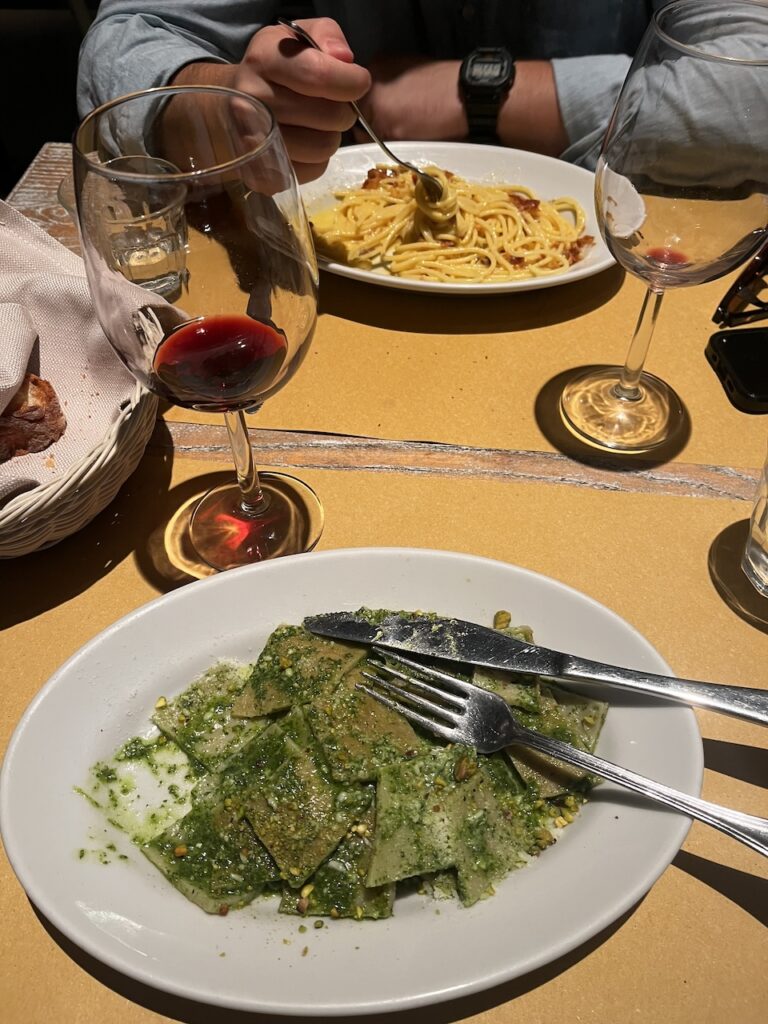
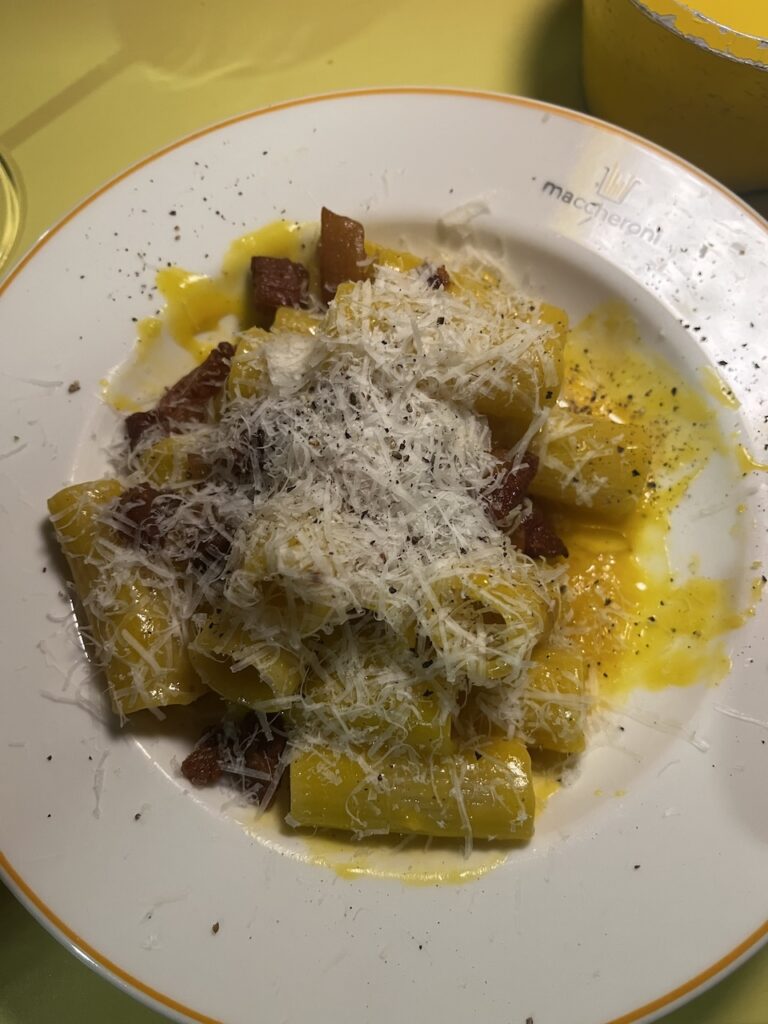
One of the most important ingredients in the area is guanciale, a cut of cured pig cheek, which is an essential ingredient in many pasta dishes in Lazio and around Italy (including carbonara).
Wine Selection: Enjoy a glass of Frascati and/or Cesanese wine—why not, when in Rome after all?
Liguria: Pesto
Liguria is located in the north of Italy, bordering France and hugging the coastline. It is a popular vacation spot for locals and visitors, with some of Italy’s nicest beach resorts. Liguria’s specialty is pesto, one of the most popular Italian sauces, both in Italy and around the world. Don’t miss out on Trofie al Pesto if you visit; I know I will be taking a suitcase of pesto back home with me!
Being on the coast, Ligurian cuisine is hugely influenced by seafood. Ciuppin soup is particularly popular in the area, made from stale bread and leftover fish and seasoned with wine, onion, and garlic. I know it doesn’t sound great, but trust me on this one. After all, stale bread is just a crouton!
Wine Selection: Pigato is a great wine to enjoy with your pesto pasta!
Lombardy: Risotto alla Milanese
Lombardy is located in northern Italy and is home to Milan, the biggest city in the country. Like everywhere in Italy, food is extremely important to Lombardians, and the region is home to plenty of great dishes, even for fussy eaters.
If you’re wondering what food northern Italy is known for, you can find out everything you need to know in Lombardy.
Rice or stuffed pasta is a lot more popular than pasta with sauce in the region, making risotto one of the specialties in the area, often eaten as a first course (risotto alla Milanese is my personal favorite—chef’s kiss). The Christmas bread, panettone, is from Lombardy and has grown to become an important part of Christmas all over the world. If you visit in the winter, make sure to sample some (personal recommendation for the pistachio-filled versions).
Wine Selection: Wash down your meal with a glass of Valtellina.
Marche: Olive Ascolane
Located in Central Italy on the East Coast, Marche is a small, hilly region with a beautiful coastline. The hilly areas make it perfect for growing olives, and some of the best olive oil in the country comes from the region.
With a coastline and inland areas, the dishes found in the area differ depending on where you are, with dishes like brodetto (a fish stew) popular by the sea and vincisgrassi (a layered pasta dish) more popular inland. Don’t miss out on the olive ascolane, a type of stuffed, fried olive that is beyond delicious.
Wine Selection: Verdicchio is a great wine to enjoy with dinner here (or without; it’s vacay!).
Molise: Pamparella
Molise is Italy’s newest region and the second-smallest region in the country. The region is mountainous, with an impressive coastline in the northeast. Molise used to share a region with Abruzzo before separating in 1963, and therefore the cuisine is very similar.
One of the biggest things that defines food in Molise is the use of aromatic herbs that grow in the area, such as fennel-seasoned sausages. Scamorza is a popular cheese served grilled with fresh bread and is a must-try for cheese lovers. The local specialty is pamparella, a spicy cured pork, which is used to flavor a variety of sauces.
Wine Selection: For something to drink, don’t miss a glass of Tintilia.
Piedmont: Tartufo d’Alba
Piedmont borders France and Switzerland in the north of Italy and is the second-largest region in Italy. The region is surrounded on three sides by the Alps and is a particularly mountainous region with no coastline.
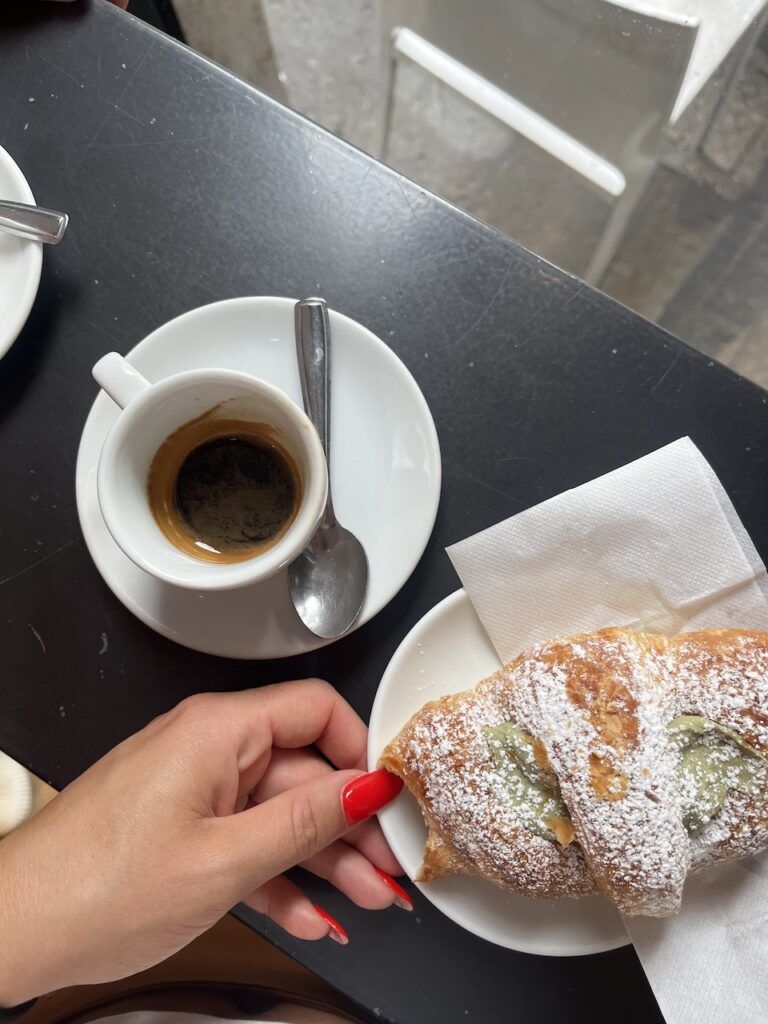
Piedmont produces more coffee, rice, and white truffles than anywhere else in Italy and is the third-best region for DOC and DOCG wines. If you’re in the area, look out for the famous Tartufo d’Alba (white truffle), Agnolotti (stuffed pasta), and a hot cup of Lavazza, the famous Italian coffee that is produced in the region (there are no words to describe how much better Italian coffee is than anywhere else).
Wine Selection: Piedmont is the second-biggest exporter of wine in the whole country; make sure to grab a glass of Barolo or Barbaresco with your meal.
Puglia: Taralli
Puglia is the heel of Italy, with a large coastline that borders the Adriatic Sea, the Strait of Otranto, and the Ionian Sea. The southern coastline in Puglia is the largest of Italy’s mainland regions and it is a popular vacation spot for both locals and tourists to Italy.
Puglia hosts sagre food festivals throughout the year, showcasing the local cuisine and great ingredients of the region. If you’re planning on visiting Puglia, check out when the festivals happen before you book!
The most typical pasta shapes in Puglia are orecchiette, cavatelli, and troccoli, and one of the best pasta dishes is orecchiette con cime de rapa (pasta with turnip greens). If you’re not ready for a full meal, the most popular snack is taralli, a type of fried bread that comes in both sweet and savory versions.
Wine Selection: Grab a glass of Primitivo or Negroamaro when you’re in the region.
Sardinia: Fregola
Sardinia is the second-largest island in Italy, located in the Mediterranean Sea off the west coast of Italy and below the island of Corsica. The island is home to mountains, woodlands, and some of the best beaches in the world.
The island of Sardinia is very rural, with most of the island unpopulated or populated by small villages of farming or fishing communities. Meat, including pork, lamb, and horse (😵💫), is popular inland, while seafood, like fregula, a type of Sardinian seafood pasta, is more popular along the coast.
Porceddu is a roasted suckling pig (hello, Princess Diaries reference) that is offered at agriturismos and family barbecues, while culurgiones (potato-stuffed pasta) is another great Sardinian dish you won’t regret trying. You can’t visit the island without trying the unique, crunchy flatbread, which is only found in Sardinia; it is typically offered before and alongside every meal at a restaurant and in local homes.
When it comes to cheeses, Sardinia is home to one of the most infamous in the world: casu marzu, which contains live maggots! It’s illegal to sell but if you know where to look, it’s still consumed on the island. Hard pass!
Wine Selection: When in Sardinia, enjoy a glass of Cannonau or a Vermentino di Gallura, and don’t skip the digestivo Mirto, made from myrtle berries grown on the island.
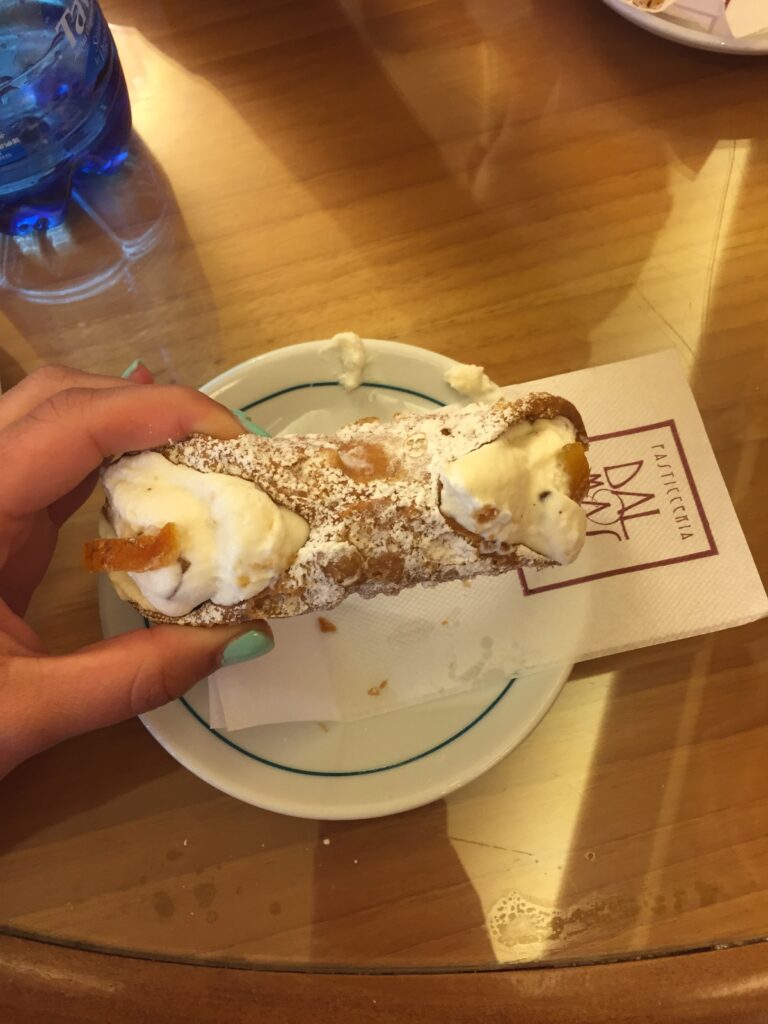
Sicily: Cannoli
Sicily is Italy’s largest island, located off the “toe” of Italy’s boot. It is home to one of the most active volcanoes in the world, as well as some of Italy’s best and most visited beaches.
Known as “God’s Kitchen,” you can find some of the best food in the world in Sicily. Whether you have a sweet tooth or you crave something savory—from cannoli to arancini—the island is a true food lover’s paradise.
Pasta plays a huge part in cuisine all over the southern regions of Italy, and Sicily is no different, with one of the best pasta dishes being spaghetti ai ricci di mare, or pasta with sea urchins. Being an island, seafood plays a huge role in Sicilian cuisine; swordfish is particularly popular, as is couscous al pesce.
Wine Selection: In Sicily, sample a glass of Nero d’Avola.
Trentino-Alto Adige: Speck
Trentino-Alto Adige is one of the most northern regions of Italy, bordering Austria and Switzerland and home to my new favorite area of Italy—The Dolomites. A large portion of the population speaks German as their first language and the foods in the region are also heavily influenced by Austrian cuisine.
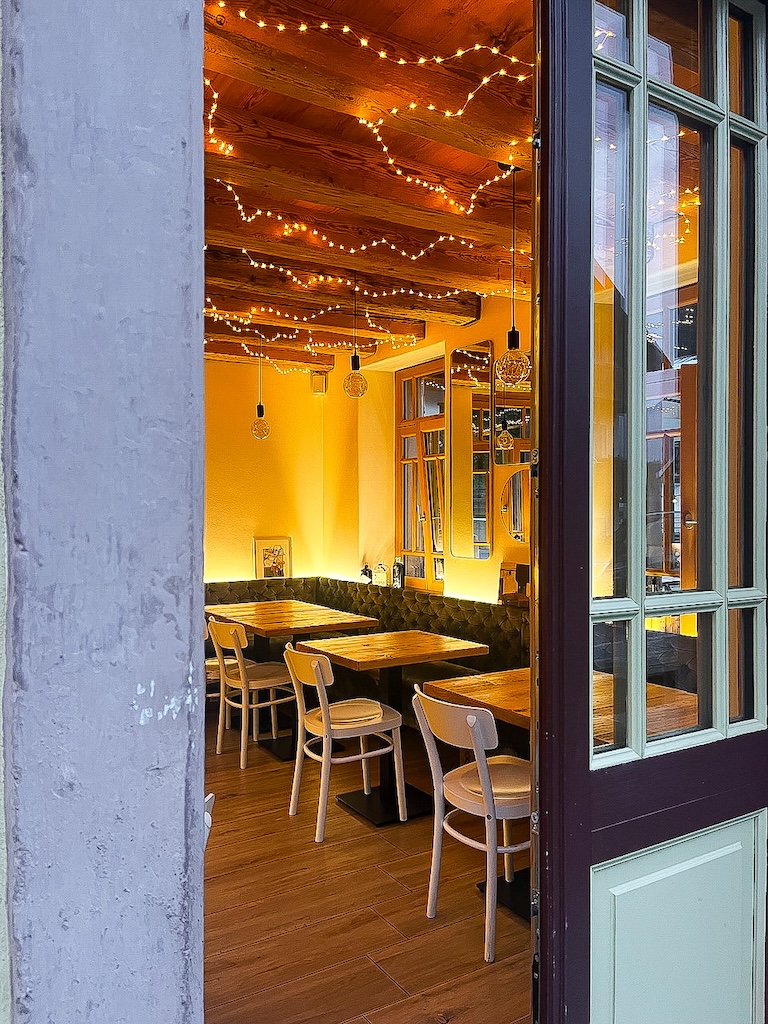
Below are several restaurants you have to visit during your trip to Venas di Cadore and Valle di Cadore:
- Birraria Bauce – Via Enrico Mattei, 62, 32040 Borca di Cadore BL, Italy
- Alla Stazion – Via Manzago, 7, 32044 Pieve di Cadore BL, Italy
- Pizzeria “La Cantinetta” – Via XX Settembre, 66, 32040 Valle di Cadore BL, Italy
Save my full list on Google Maps for your next trip!
A trip to the region is not complete without sampling some speck, a type of smoked ham, or, if you’re looking for something more adventurous, try Graukäse, a type of gray cheese that is served alone as an appetizer, or on top of Graukäse, a local potato and leek soup.
There was one cheese I couldn’t leave Italy without buying a hunk to take home: Sassonero. It translates to “black rock” and it is quite possibly the greatest thing I ate the whole trip. They only make it in the Dolomites so you likely won’t find it anywhere else. Make sure to sample it at Alla Stazione!
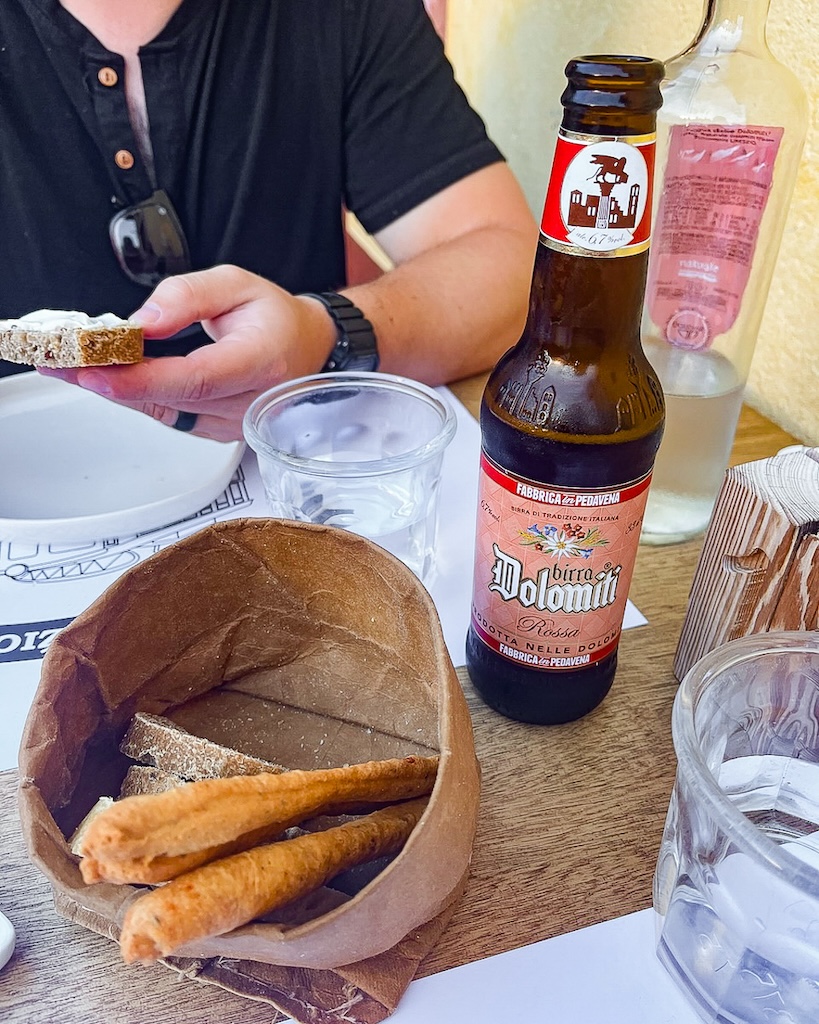
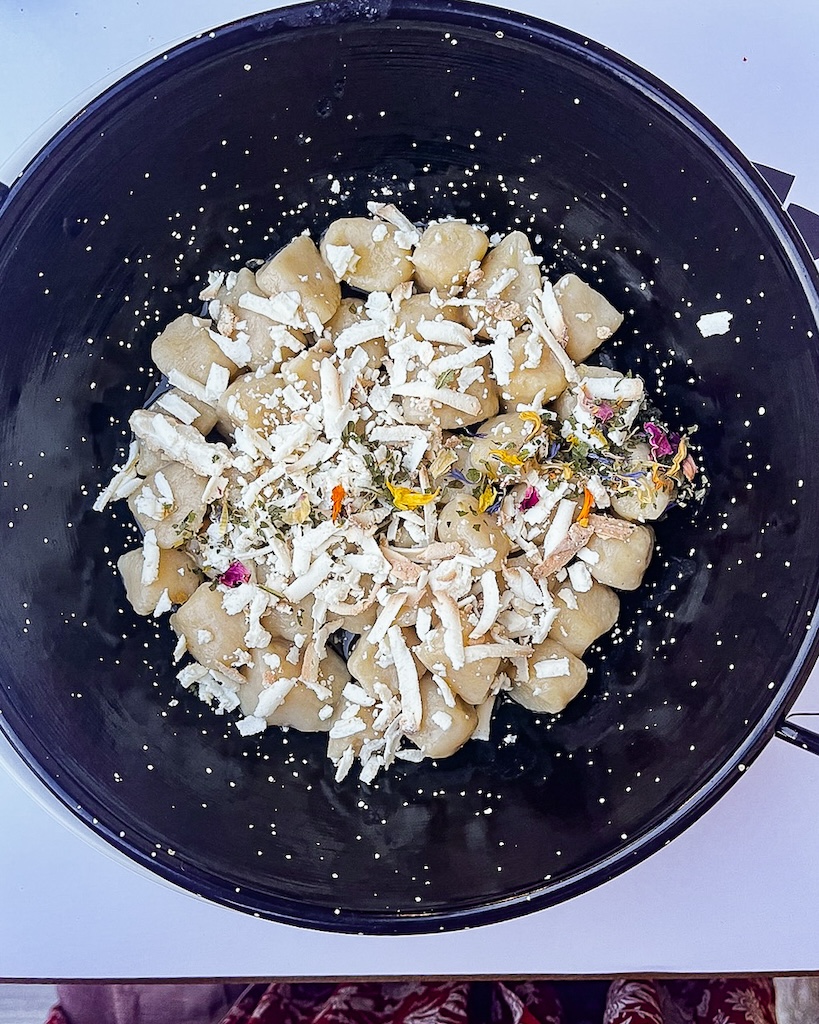
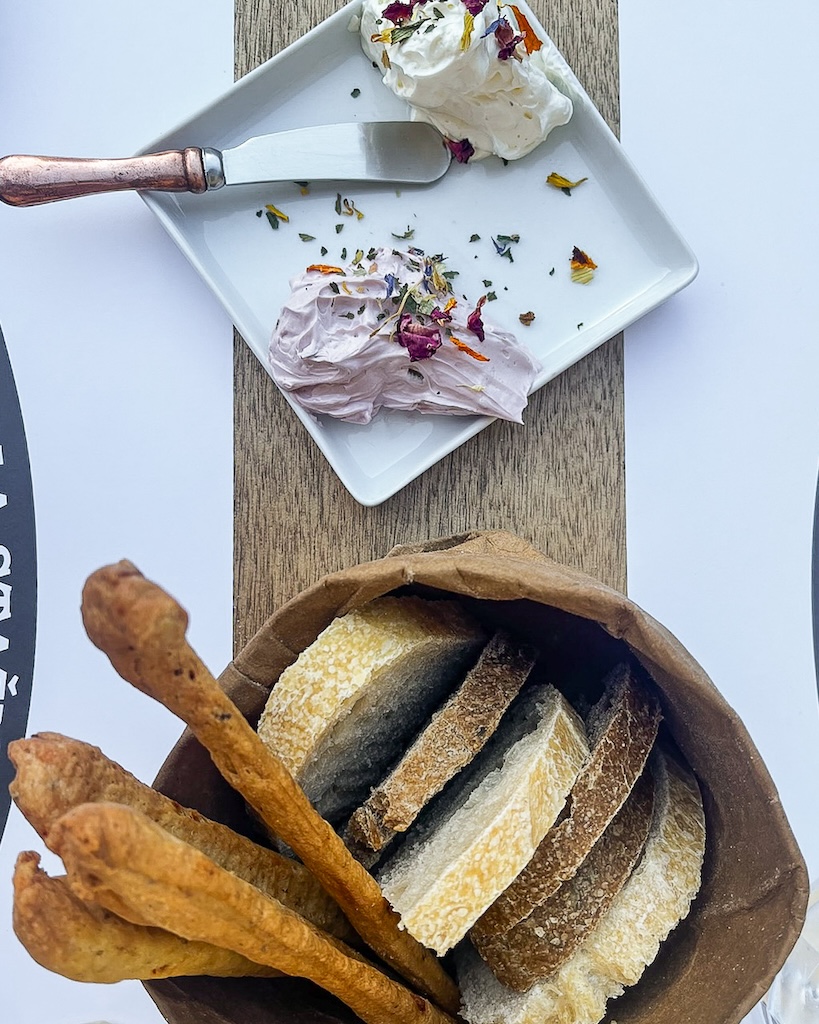
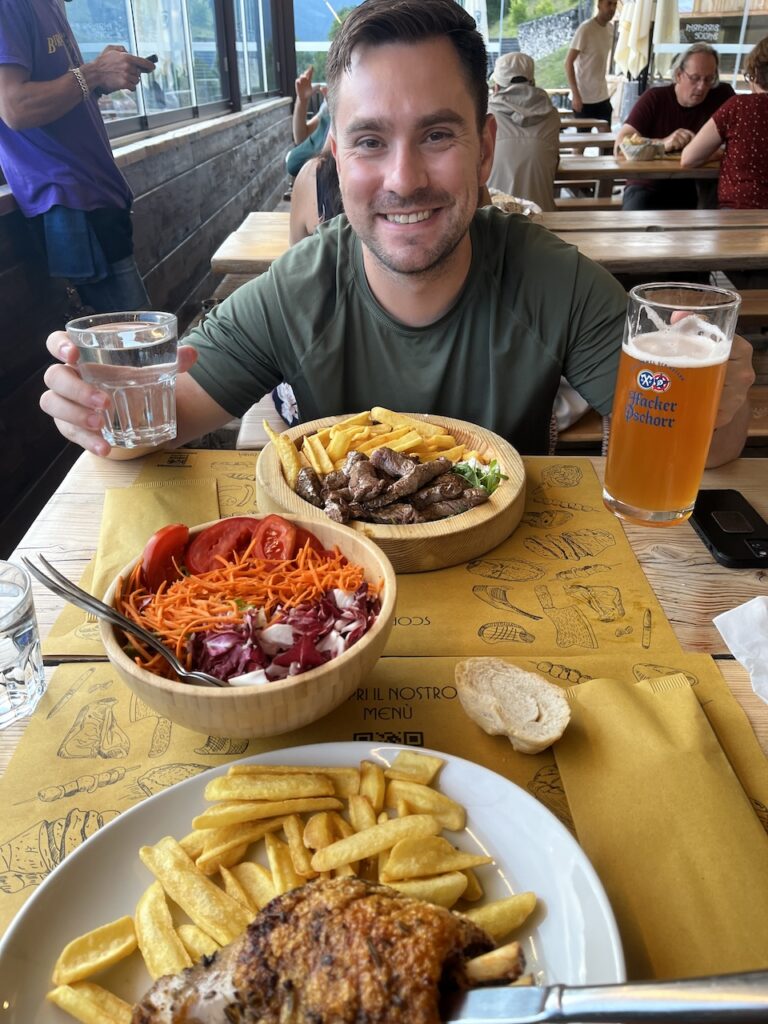
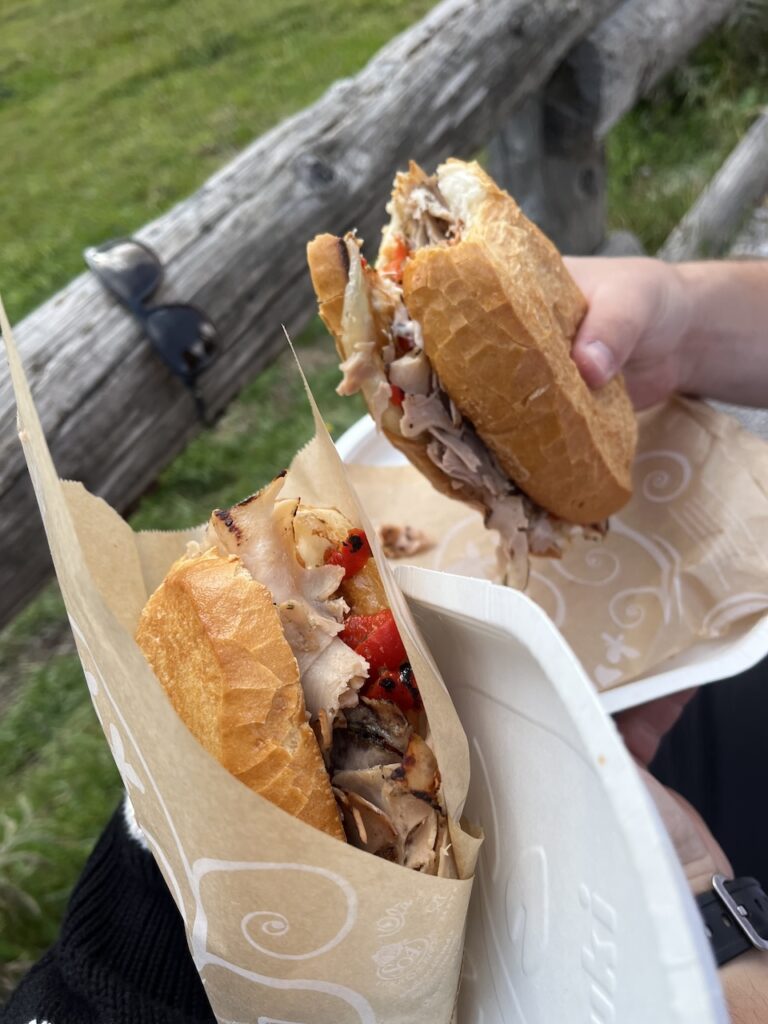
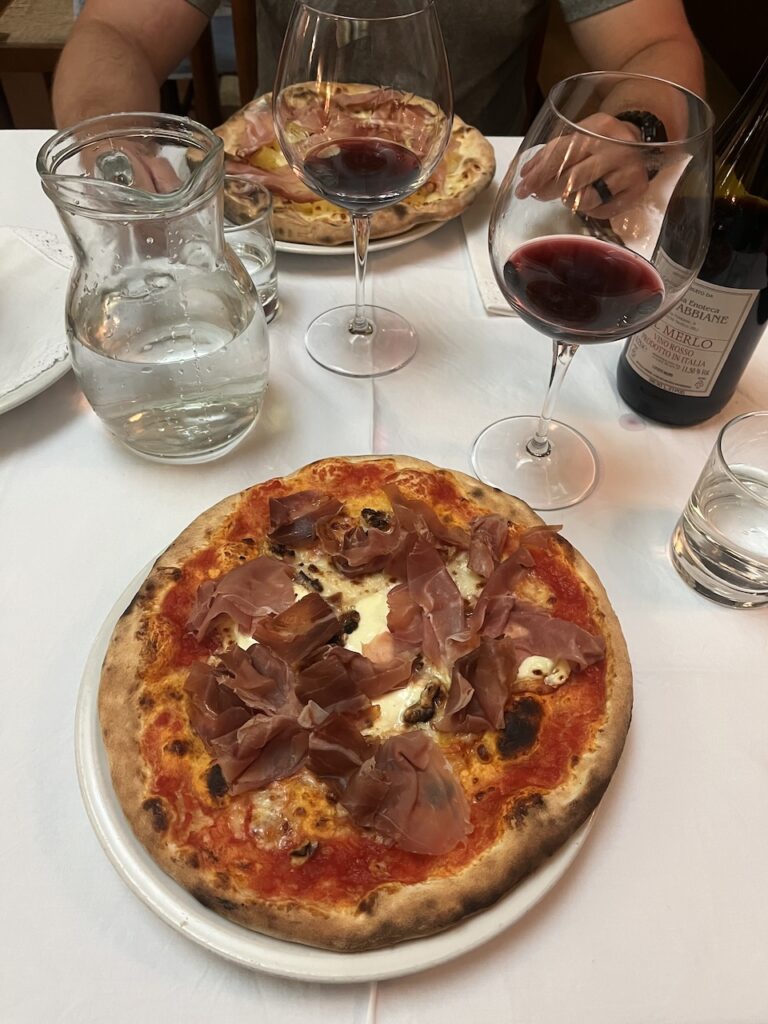
Wine Selection: Pair these foods with Gewürztraminer or Teroldego wines. Or a birra rossa (red beer) if that’s more your speed!
Tuscany: Bistecca alla Fiorentina
The Tuscany region of Italy is the heart of this beautiful country. Known for its rolling hills, historical cities, and being the birthplace of the Renaissance, you can’t miss a visit to this breathtaking spot. Located in central Italy, on the west coast of the country, Tuscany is world renowned for its amazing wines.
It is the second most visited region in Italy by tourists who flock to the region for exceptional plates of food, charming villages, art, stunning countryside, and, of course, that amazing wine we mentioned before.
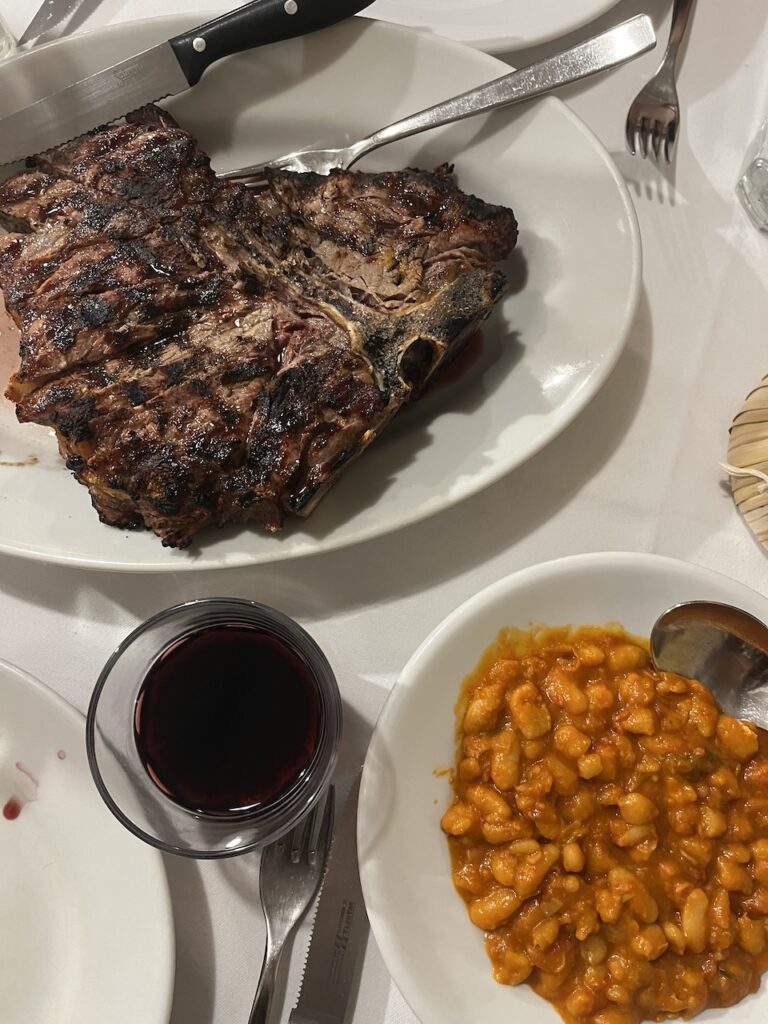
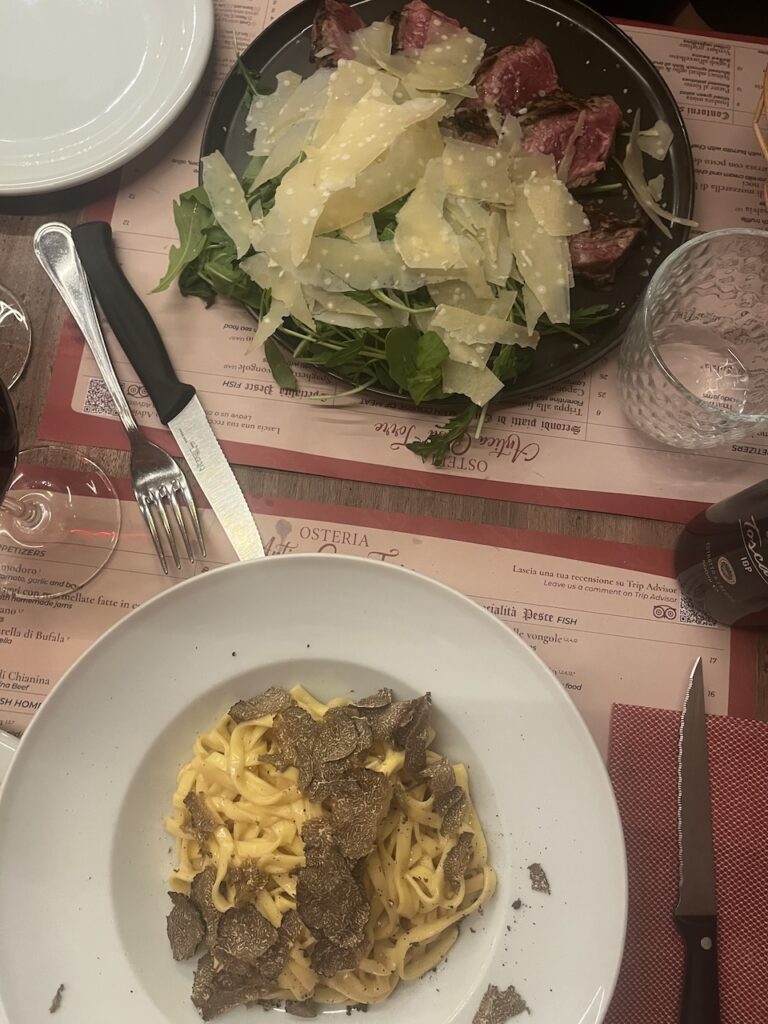
Food in Tuscany is considered to be very simple, but thanks to the great ingredients in the region, it’s considered some of the best in the world. The biggest specialty is probably the Bistecca alla Fiorentina, or Florentine steak, to you and me.
I’Brindellone is a MUST visit when you’re in Florence. This quaint family-run restaurant was a recommendation from our Airbnb host. We actually walked there to make a reservation in person the day before because we were worried about not getting a spot. Make a reservation early and expect to be seated family style right next to other guests at combined tables. Trust me when I tell you it makes the experience that much better! Order the truffle pasta, house wine, Florentine beans, and of course, bistecca!
Wine Selection: You can’t enjoy the live music in a piazza in Florence without a glass of Chianti (or two) in hand.
Umbria: Tartufo Nero
Located in central Italy, Umbria is one of the only regions in Italy not on the coast. It is home to hills, mountains, and valleys—some of the most beautiful landscapes in Italy.
Porchetta (roast pork), Tartufo Nero (black truffle), and Crostini alla norcini (toasted bread with a variety of spreads and toppings) are all popular offerings.
Wine Pick: Try a glass of Orvieto when you’re visiting.
Aosta Valley (Valle d’Aosta): Carbonade
Bordering France and Switzerland, the Aosta Valley is an alpine valley situated in the north of Italy. Officially, both Italian and French are spoken in the region, as well as a local dialect.
Being located on the border of France and Switzerland has influenced a lot of the food in the region; however, it is still distinctly Italian, using ingredients like polenta, strong cheeses, and local, fresh ingredients.
One of the best meals to try is the carbonade, a beef stew cooked in red wine and served with polenta. Expect to see Rye bread, Fontina cheese, Vallee d’Aoste Lard d’Arnad (cured lard), and Vallee d’Aoste Jambon de Bosses (a type of ham) on your aperitivo plate.
Wine Selection: Try a glass of Fumin or Petite Arvine with your meal.
Veneto
Situated on the north coast of Italy and home to one of the most famous cities in the world, Venice, Veneto is the most visited region in Italy and home to some great food (which I love sampling every chance I get).
Venetian cuisine is unique to Veneto and differs hugely even from neighboring regions. The cuisine changes within the region based on geography, with coastal areas, mountains, and plains each offering a different specialty.
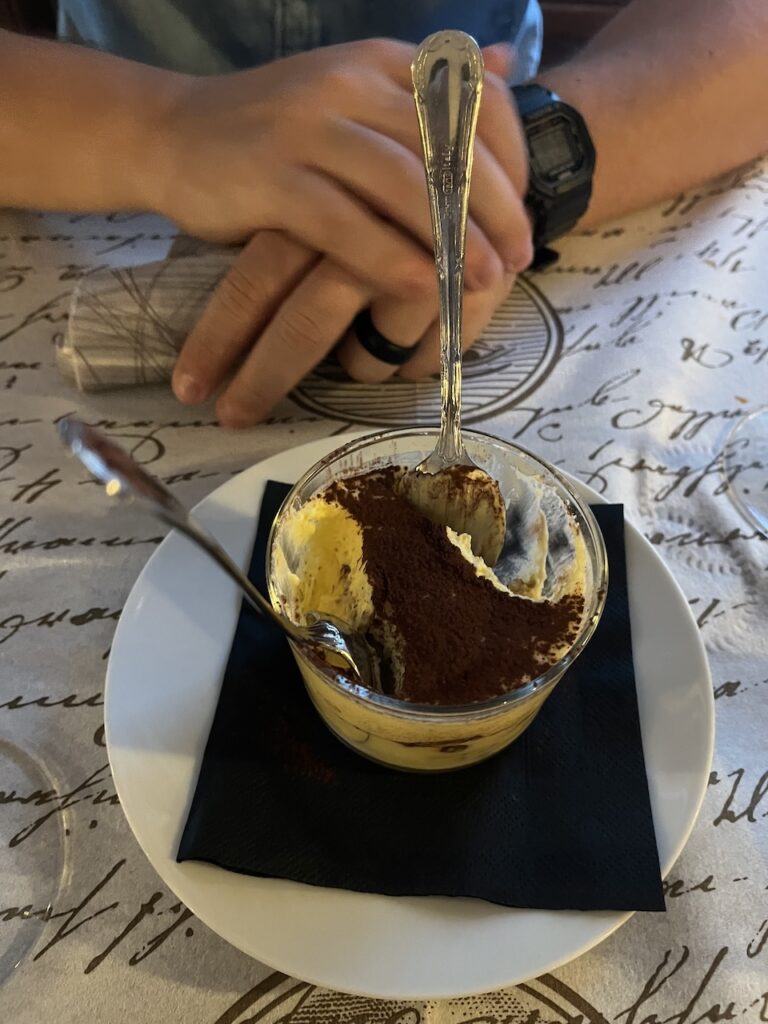

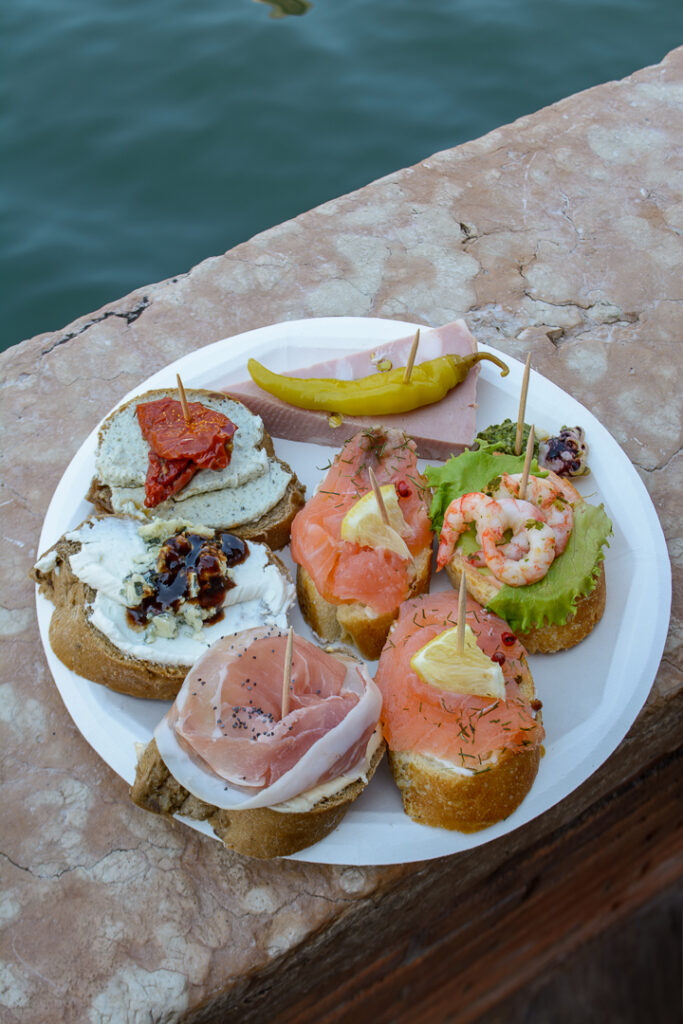
The most common dish is polenta, which has been a staple in the area for centuries. It is cooked differently in every area, city, and home in this region of Italy, but it’s always good.
If you want meat, head to Verona and try the Brasato all’Amarone (braised beef with polenta), and if you prefer seafood, try the Risotto al Nero di Seppia (squid ink risotto). And last but most definitely not least, you MUST try the cicchetti in Venice. Cicchetti is a snacky finger food served on sliced baguette topped with various spreads, seafoods, meats and cheeses. We tried ours at Osteria Al Squero, a cozy, canal-side cafe located in Dorsoduro. Chef’s kiss.
Another thing you can’t miss (and I certainly won’t be) in Veneto is Tiramisu. This iconic dessert was invented in Treviso in the 60’s!
Wine Selection: Enjoy your tiramisu with a glass of Prosecco or an Amarone wine.
Want to learn more about Italy? Sign up for my email list for more Italy content, or follow me on Instagram for live travel updates!

Sofia is an NC native turned Atlanta-based creative living with her husband, Parker, and their mini labradoodle, Bernadette. She’s an SEO copywriter and digital strategist for luxury, woman-owned brands, specializing in blog, Pinterest, and email marketing that connects. With a background in marketing (and bridal beauty), she blends strategy with storytelling. A Christ follower and forever adventurer, Sofia is passionate about intentional living, clean beauty, and chasing meaning over metrics—whether she’s road-tripping to a national park or crafting content that makes life a little more beautiful (and your biz a lot more visible).
